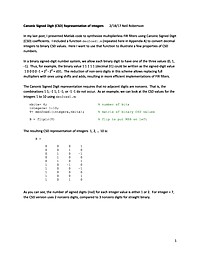
Canonic Signed Digit (CSD) Representation of Integers
In my last post I presented Matlab code to synthesize multiplierless FIR filters using Canonic Signed Digit (CSD) coefficients. I included a function dec2csd1.m (repeated here in Appendix A) to convert decimal integers to binary CSD...
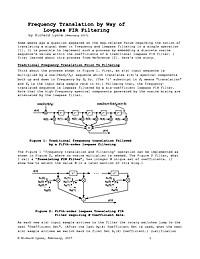
Frequency Translation by Way of Lowpass FIR Filtering
Some weeks ago a question appeared on the dsp.related Forum regarding the notion of translating a signal down in frequency and lowpass filtering in a single operation [1]. It is possible to implement such a process by embedding a discrete cosine...
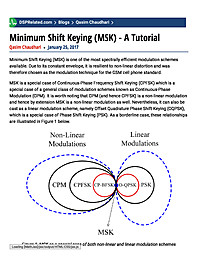
Minimum Shift Keying (MSK) - A Tutorial
Minimum Shift Keying (MSK) is one of the most spectrally efficient modulation schemes available. Due to its constant envelope, it is resilient to non-linear distortion and was therefore chosen as the modulation technique for the GSM cell phone...
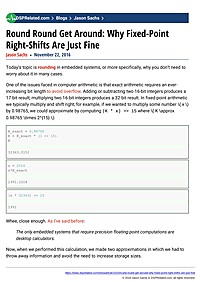
Round Round Get Around: Why Fixed-Point Right-Shifts Are Just Fine
Today’s topic is rounding in embedded systems, or more specifically, why you don’t need to worry about it in many cases.One of the issues faced in computer arithmetic is that exact arithmetic requires an ever-increasing bit length to...
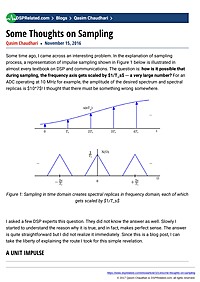
Some Thoughts on Sampling
Some time ago, I came across an interesting problem. In the explanation of sampling process, a representation of impulse sampling shown in Figure 1 below is illustrated in almost every textbook on DSP and communications. The question is: how is...
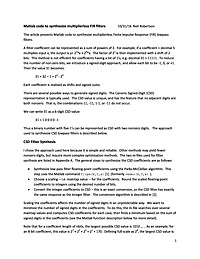
Matlab Code to Synthesize Multiplierless FIR Filters
This article presents Matlab code to synthesize multiplierless Finite Impulse Response (FIR) lowpass filters. A filter coefficient can be represented as a sum of powers of 2. For example, if a coefficient = decimal 5 multiplies input x,...
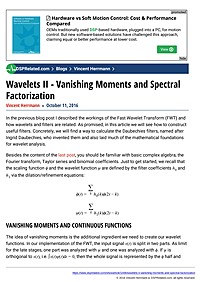
Wavelets II - Vanishing Moments and Spectral Factorization
In the previous blog post I described the workings of the Fast Wavelet Transform (FWT) and how wavelets and filters are related. As promised, in this article we will see how to construct useful filters. Concretely, we will find a way to calculate...

The Power Spectrum
Often, when calculating the spectrum of a sampled signal, we are interested in relative powers, and we don't care about the absolute accuracy of the y axis. However, when the sampled signal represents an analog signal, we sometimes need an accurate picture of the analog signal's power in the frequency domain. This post shows how to calculate an accurate power spectrum.
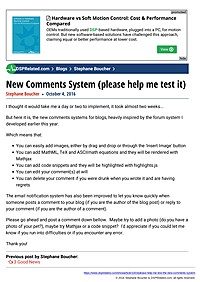
New Comments System (please help me test it)
I thought it would take me a day or two to implement, it took almost two weeks...But here it is, the new comments systems for blogs, heavily inspired by the forum system I developed earlier this year. Which means that:You can easily add...
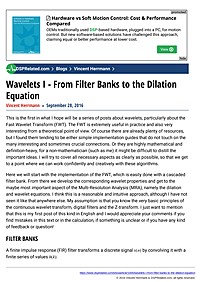
Wavelets I - From Filter Banks to the Dilation Equation
This is the first in what I hope will be a series of posts about wavelets, particularly about the Fast Wavelet Transform (FWT). The FWT is extremely useful in practice and also very interesting from a theoretical point of view. Of course there...
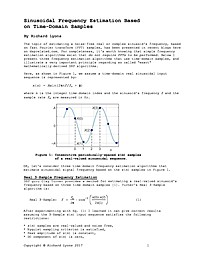
Sinusoidal Frequency Estimation Based on Time-Domain Samples
The topic of estimating a noise-free real or complex sinusoid's frequency, based on fast Fourier transform (FFT) samples, has been presented in recent blogs here on dsprelated.com. For completeness, it's worth knowing that simple frequency estimation algorithms exist that do not require FFTs to be performed . Below I present three frequency estimation algorithms that use time-domain samples, and illustrate a very important principle regarding so called "exact" mathematically-derived DSP algorithms.
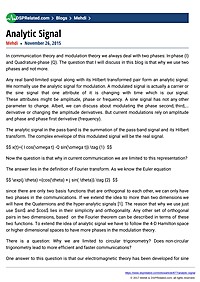
Analytic Signal
In communication theory and modulation theory we always deal with two phases: In-phase (I) and Quadrature-phase (Q). The question that I will discuss in this blog is that why we use two phases and not more.

New Comments System (please help me test it)
I thought it would take me a day or two to implement, it took almost two weeks...But here it is, the new comments systems for blogs, heavily inspired by the forum system I developed earlier this year. Which means that:You can easily add...
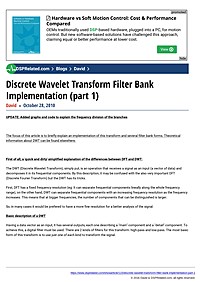
Discrete Wavelet Transform Filter Bank Implementation (part 1)
UPDATE: Added graphs and code to explain the frequency division of the branches The focus of this article is to briefly explain an implementation of this transform and several filter bank forms. Theoretical information about DWT can be found...
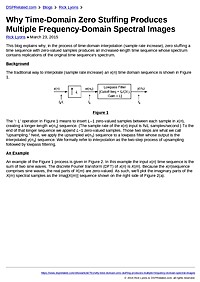
Why Time-Domain Zero Stuffing Produces Multiple Frequency-Domain Spectral Images
This blog explains why, in the process of time-domain interpolation (sample rate increase), zero stuffing a time sequence with zero-valued samples produces an increased-length time sequence whose spectrum contains replications of the original...
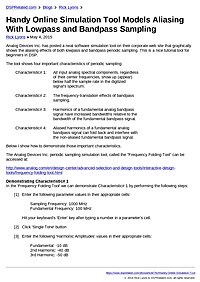
Handy Online Simulation Tool Models Aliasing With Lowpass and Bandpass Sampling
Analog Devices Inc. has posted a neat software simulation tool on their corporate web site that graphically shows the aliasing effects of both lowpass and bandpass periodic sampling. This is a nice tutorial tool for beginners in DSP. The...

Python scipy.signal IIR Filter Design
Introduction The following is an introduction on how to design an infinite impulse response (IIR) filters using the Python scipy.signal package. This post, mainly, covers how to use the scipy.signal package and is not a thorough...
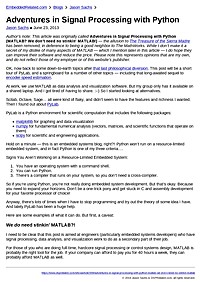
Adventures in Signal Processing with Python
Author’s note: This article was originally called Adventures in Signal Processing with Python (MATLAB? We don’t need no stinkin' MATLAB!) — the allusion to The Treasure of the Sierra Madre has been removed, in deference to being...
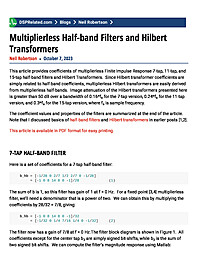
Multiplierless Half-band Filters and Hilbert Transformers
This article provides coefficients of multiplierless Finite Impulse Response 7-tap, 11-tap, and 15-tap half-band filters and Hilbert Transformers. Since Hilbert transformer coefficients are simply related to half-band coefficients, multiplierless Hilbert transformers are easily derived from multiplierless half-bands.
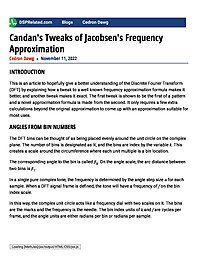
Candan's Tweaks of Jacobsen's Frequency Approximation
Introduction This is an article to hopefully give a better understanding of the Discrete Fourier Transform (DFT) by explaining how a tweak to a well known frequency approximation formula makes it better, and another tweak makes it exact. The...


















